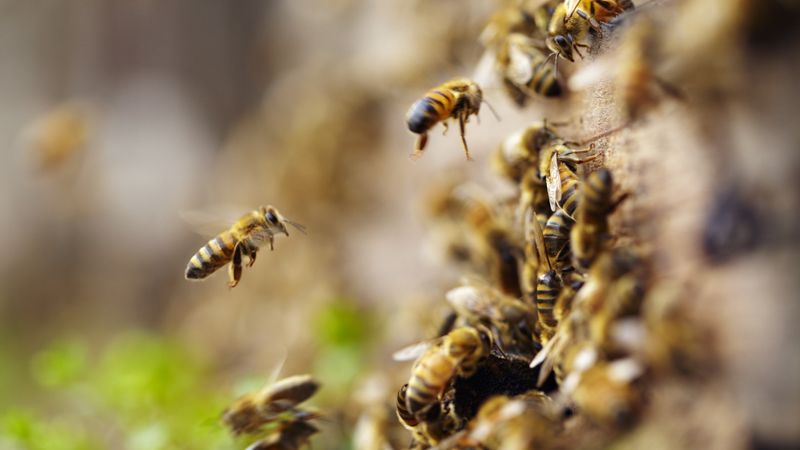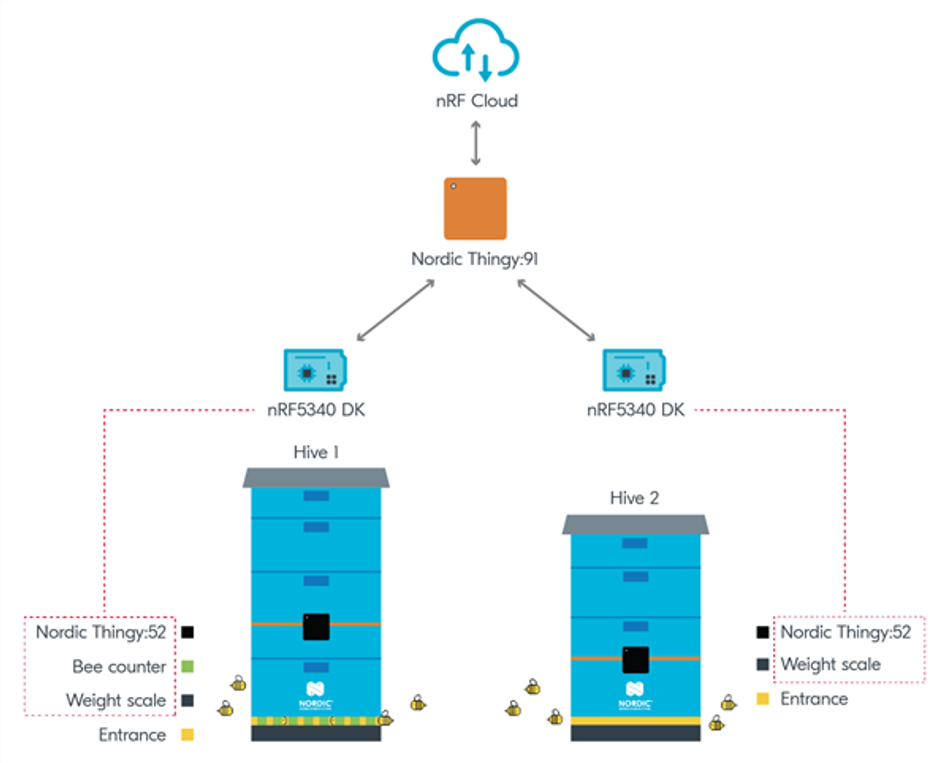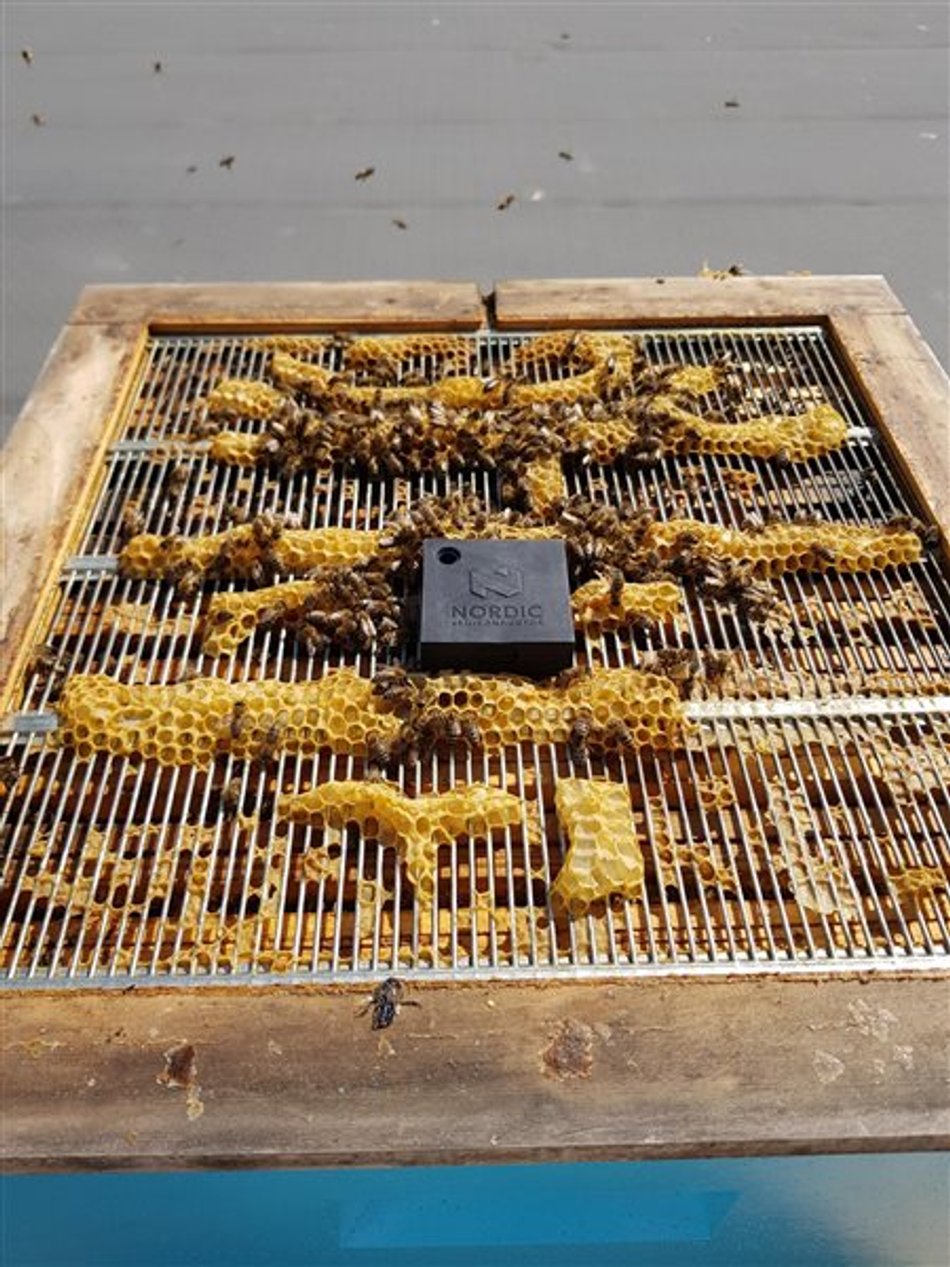Keeping an Eye on the Bees: What Smart Monitoring Systems Can Bring to Bee Sustainability
Low-power Bluetooth sensing systems enable scientists to better monitor and protect bee populations in urban and rural areas.
According to a study published in PLoS ONE, honeybee populations have declined since the winter of 2006/07 due to the rapid loss of worker bees from pathogens and stress factors. This has since been dubbed the Colony Collapse Disorder (CCD) [1,2]. The loss of bee populations threatens many foodstuffs that we eat today and will significantly affect biodiversity in many natural habitats. Low-power IoT devices offer a way for scientists and beekeepers to gather more information on bee populations and slow their decline.
There’s been a major drive for sustainable electronic design in the last 10-15 years, much of which has been driven by the desire to meet the sustainable development goals set by the United Nations (UN). These sustainability goals comprise 17 different areas that must be improved globally to achieve a balanced social, economic, and environmental sustainability [3].
A recent collaboration between Nordic Semiconductors and students at the Norwegian University of Science and Technology (NTNU) has created a new adaptable sensing system for the smart monitoring of bees in their hives but could have a broader impact for monitoring other natural environments and ecosystems as well.
Why Is There a Need for Smart Beehives?
When you think of the possibilities of smart technology, beehives might not be at the top of the list, but they offer a lot of potential for allowing beekeepers to scale up their operations and keep more bees alive with much greater ease. The development of smart hives has come at a time when bees are starting to struggle due to urban development and intensive farming changing their habitat, as well as neonicotinoids pesticides, parasitic pests, fungal diseases all contributing to a decline in bee health [4].
Climate change has also been deemed responsible for the decline in large bees (such as bumblebees) and comb-building cavity nesters―because these bees have a lower heat tolerance and higher temperatures in their local environment are causing more to die off [5]. The UN Development Goal 13 looks to take urgent action to combat climate change and its impacts, and preventing the decline of bees is a key part of this goal.
Therefore, there is an urgent need to monitor bee populations and increase the survivability of bee populations―which in turn will have a positive impact on the environment (in the pollination of more plants, for example, for agricultural and carbon-reduction purposes) [6]. From a beekeeping perspective, the development of smart hives can help beekeepers manage their existing bee populations with a data-driven approach enabling them to make more accurate decisions about population numbers and honey harvest.
The UN Development Goal 15 looks to protect, restore, and promote the sustainable use of terrestrial ecosystems, and smart hives could provide an easy monitoring solution for restoring bee ecosystems by helping beekeepers to keep more bees alive in their hives—by detecting the health of the hive over time. The final benefit for beekeepers, is that it prevents them from taking unnecessary trips out to the beehive when there’s a suspected issue but it’s really a false alarm—allowing them to maximize their time on other tasks (including scaling up their hives).
The UN Development Goal 11 looks to make cities and human settlements more sustainable. There’s the potential to not only monitor bees in these urban environments to meet parts of this goal, but there is also the possibility for monitoring of other aspects of human settlements to further meet these goals. The student developers in this project have provided a sensing platform that is not exclusive to beehives, and they have created a generic sensing and monitoring system that offers data access from the cloud which could be utilized in other garden projects within cities.
Smart Bee Monitoring using Low Power Bluetooth Sensing Networks: A Case Study
Students from NTNU teamed up with Nordic Semiconductors to build the smart beehive monitoring system using Thingy:52, bee counter, woodpecker alarm and BroodMinder-W scale sensors, processed the data with nRF5340dk processing and Thingy:91 cloud units [from Nordic Semiconductors] with the system communicating together using a cloud-based system called the nRF cloud.
To make the system scalable for beekeepers, the monitoring system was split into two sub-systems. The first sub-system, known as the basis unit, was composed of internal sensors, the data processing unit, and the cloud system. The second sub-system, the expansion system, contained the external sensors and any appropriate hardware for their integration into the basis system. Both sub-systems were based on the Nordic Semiconductors system-on-a-chip nRF5340 development kit.
The internal sensors in the unit were all a part of a prototyping platform known as Thingy:52. Placed inside the hive, these sensor units work out of the box (due to their installed firmware) and measure the temperature, humidity, and air pressure of the internal environment and could be utilized to trigger a warning if something was wrong inside the hive—including toppling of the hive.
The external sensors were more varied and included bee counters, a woodpecker alarm, and an external weight and temperature sensor (BroodMinder-W). The bee counter consists of 48 optical sensors and collects a range of data, including the rate of expansion or decline of bee flights to indicate hive health, the timing shifts between peaks of bee traffic for determining the number of foragers, and the rate of expansion or decline of orientation flights for deducing the health of the queen bee. The sensor collects all the data using light absorption inside the hive and transmits the data to the nRF5340 unit.
Another key external sensor is the woodpecker alarm. This sensor utilized machine learning capabilities of the nRF5340 processor, using a public platform known as Edge Impulse. The woodpecker alarm used the recording of a woodpecker’s sound to train the machine learning algorithm to detect when woodpeckers are near the hive and send an alert out over Bluetooth and SMS to warn the beekeeper.
The final component is the processing and cloud computing systems, which is where all the data is sent to for analysis and alert generation. All the data processing was performed by the nRF5340, and the cloud was controlled using an nRF9160 unit (another Nordic Semiconductor’s unit that is often referred to as Thingy:91). The team used the nRF cloud software, which is an IoT cloud service that saves all the acquired data for up to 30 days.
The nRF9160 turns the sensor data it receives into a formatted message and sends it to the cloud with a timestamp so that any alerts could be attributed in real-time for the beekeepers, offering a continuous way for beekeepers to monitor their hives. While not tested to the extremes of its capabilities so far, the system has the potential for use with up to 19 hives in its current prototype state. Using this system, there’s a lot of potential for helping beekeepers to keep track of large amounts of bees and keep more alive, which opens the door for a more sustainable ecosystem in both rural and urban environments.
Conclusion
The low power Bluetooth sensing system developed by the NTNU students is a prototype in conjunction with Nordic Semiconductors. The monitoring system developed in this project presents a scalable opportunity for beekeepers to keep their hives running more optimally. The system also provides a way for beekeepers to keep more bees alive and offers a way for beekeepers to scale up their beehive numbers when the time is right. The project covers a number of development goals set out by the UN and the generic nature of the sensing system could offer a sustainable way of monitoring both bee populations in rural and urban environments, as well as a number of other ecosystems and garden projects.
Connect for Good: Low Power Wireless Sustainability Challenge
Join us in a global effort to improve the world by using your creative minds and skills to solve issues related to sustainable living and the environment.
We seek project submissions utilizing low-power wireless technology to support the United Nations Sustainable Development Goals.
The challenge focuses on four of the goals that relate to cities and sustainability: Goal 7: Affordable and clean energy, Goal 11: Sustainable Cities and Communities, Goal 13: Climate Action and Goal 15: Life on Land.
How to enter
Step 1. Submit your entry via this form. You will be asked for a comprehensive project description, including which sustainability goal/s you are addressing, details of your team, and images or videos that support your idea.
Step 2. If you are one of the first 100 valid entries, we will provide you a free nRF9160 DK to begin to develop your project.
Step 3. Update your submission with a progress report and images via this form. Updating us on your progress is not mandatory, but the jury will value projects demonstrating project development.
Key dates
Challenge launch: April 13th, 2023
Challenge closes: October 12th, 2023
Winner announcement: November 8th, 2023
References:
[1] https://www.nature.com/scitable/blog/green-science/global_crisis_honeybee_population_on/#:~:text=The%20Colony%20Collapse%20Disorder,were%20vanishing%20into%20thin%20air.
[2] Pettis J. S. et al, Colony Collapse Disorder: A Descriptive Study, PLoS ONE, 4(8), (2009), e6481
[3] https://www.undp.org/sustainable-development-goals
[4] https://friendsoftheearth.uk/nature/what-are-causes-bee-decline
[5] https://www.openaccessgovernment.org/large-bees-declining-population-climate-change-pollination-bumblebees/134153/
[6] Patel V. et al, Why bees are critical for achieving sustainable development, Ambio, 50(1), (2021), 49-59.
[7] https://devzone.nordicsemi.com/nordic/nordic-blog/b/blog/posts/smart-hives-beehavior-monitoring
[8] https://www.youtube.com/watch?v=FelE9u2R0PE



